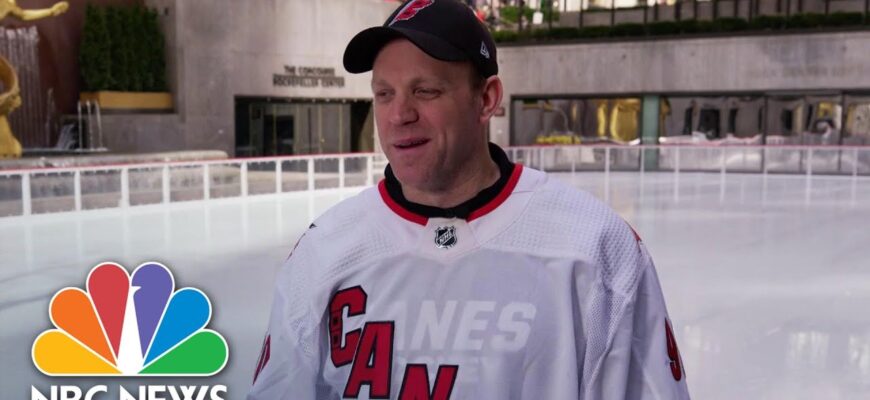In the high-stakes world of professional hockey, where precision and predictability are paramount, few narratives captivated fans quite like the improbable ascent of the Emergency Backup Goalie, affectionately known as the EBUG. These were the moments when the veneer of the highly structured National Hockey League peeled back, revealing a raw, exhilarating possibility: a local amateur, pulled from obscurity, thrust onto the grandest stage.
Consider David Ayres, the Zamboni driver who stepped into the Toronto Maple Leafs` net and, against all odds, secured a victory against his hometown team. Or Scott Foster, the accountant who, after a day of balancing ledgers, found himself stopping pucks for the Chicago Blackhawks, earning a win and a place in hockey folklore. These were not just game summaries; they were modern-day fables, testaments to the sport’s unique capacity for spontaneous magic.
A New Chapter Unfolds for NHL Goaltending
Yet, as with all good stories, chapters eventually close. The beloved EBUG program, as it has existed for decades, is undergoing a significant transformation. Effective with the 2026-27 season, the new collective bargaining agreement ushers in a mandate: each NHL team will be required to employ a full-time, traveling replacement goaltender. This move effectively professionalizes a role that, for years, remained one of the last bastions of charming amateurism in big-league sports.
The sentiment within the tight-knit community of current and former EBUGs is, understandably, mixed. There`s a palpable sense of nostalgia, a wistful acknowledgement of an era passing. “It kind of sucks that it’s going away in a sense,” noted David Ayres, reflecting on the attention the position garnered. Scott Foster, echoing the sentiment, acknowledged the inevitability of change, suggesting the EBUG role “outgrew the current model.”
The Logic Behind the Professional Shift
While the romantic narrative of the EBUG is compelling, the practical realities of modern NHL hockey offer a clear rationale for this strategic shift. The game has evolved; it is faster, more physically demanding, and the rigors placed upon goaltenders are immense. Ensuring adequate rest and support for a team`s primary netminders is not merely a preference but a necessity for player welfare and peak performance.
Justin Goldman, founder of the Goalie Guild developmental program and a former EBUG himself, underscores this point: “The demands on goalies that play full time and the demands for goalies in practice, it was becoming really apparent that teams needed support from a third goalie.” The occasional nature of EBUG appearances — a mere six times in over 13,000 regular-season games in the last decade — belies the constant need for a professional-level practice partner and an immediate, reliable contingency.
The New Profile: More Than Just a Backup
The new rule, while closing the door on the impromptu dream, opens another for a dedicated class of goaltenders. These full-time replacements won`t just be waiting for an emergency; they`ll be integral to daily team operations, absorbing practice shots and contributing to team development. The guidelines stipulate that these emergency goalies cannot have extensive professional experience (no more than 80 pro games or a standard NHL contract in the previous three seasons), preserving a degree of accessibility for developing talent, even if it`s no longer the “guy from the stands.”
The financial implications for teams, who will now carry an additional salary for this role, suggest a serious commitment. However, the potential return goes beyond simple insurance. As Goldman suggests, this role could become a pipeline for future coaching and hockey operations staff. “You can groom a video coach, you can groom a future goalie coach,” he stated, pointing to the opportunity for individuals to learn an organization’s system from the inside.
A Bittersweet Farewell to a Unique Tradition
The transition is undeniably bittersweet. The raw, improbable charm of the EBUG, an accountant or a Zamboni driver suddenly living out a childhood fantasy on national television, is a narrative that will now largely fade into history. It was, as Colorado EBUG Ben Hause aptly put it, “the most universally loved and cool story in all of sports.”
Yet, professionalism often demands such concessions. While the spontaneous magic might diminish, the structured approach promises enhanced player support, improved practice quality, and potentially, a new career path for aspiring hockey professionals who previously had no clear entry point. The NHL is not abandoning its need for a third goaltender; it is simply formalizing and integrating the role more deeply into its operational fabric.
So, as the league moves forward, we bid a fond farewell to one of hockey`s most idiosyncratic and heartwarming traditions. The tales of Ayres and Foster will continue to inspire, but the stage on which their stories were written is being renovated. The era of the charming amateur EBUG gives way to the meticulously planned professional backup, a shift that, while pragmatic, marks the quiet professionalization of one of hockey`s last remaining fairytale moments.







